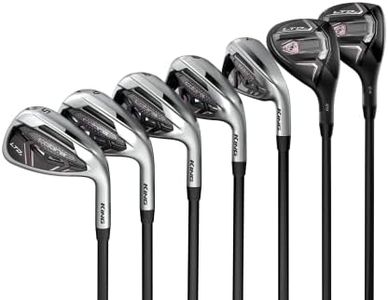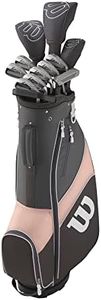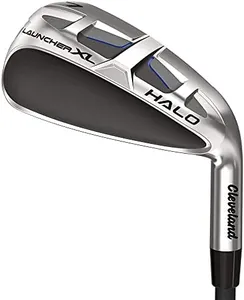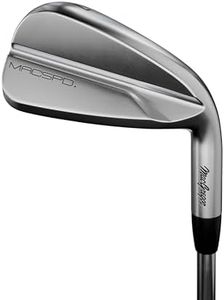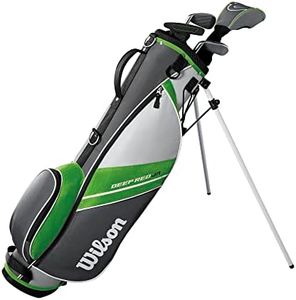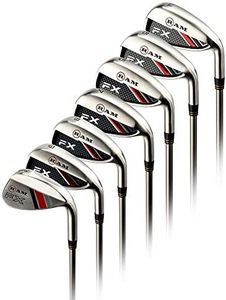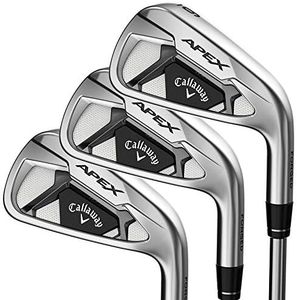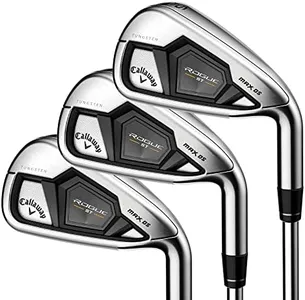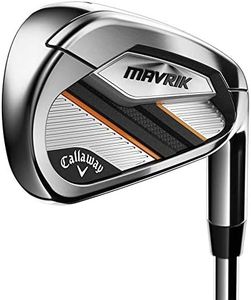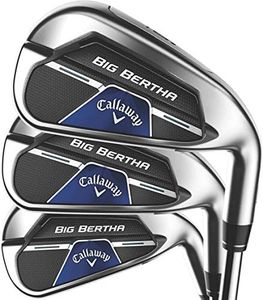We Use CookiesWe use cookies to enhance the security, performance,
functionality and for analytical and promotional activities. By continuing to browse this site you
are agreeing to our privacy policy
10 Best Iron Sets
From leading brands and best sellers available on the web.By clicking on a link to a third party's website, log data is shared with that third party.
Buying Guide for the Best Iron Sets
Selecting the right iron set for golf can dramatically impact your performance and enjoyment on the course. Irons are used for a wide range of shots, from tee-offs on shorter holes to approaches onto the green. The best set for you depends on your skill level, the way you play, and what feels comfortable in your hands. Understanding the key features will help you choose a set that complements your game and helps you improve over time.Clubhead DesignClubhead design refers to the shape and construction of the head of each iron. The two most common types are cavity back and muscle back (also called blades). Cavity back irons have a hollowed-out back, which makes them more forgiving on off-center hits—ideal for beginners and most recreational players. Muscle back irons are often preferred by advanced golfers for their feel and control, but they're less forgiving. When choosing, consider your ability and what matters more to you: forgiveness or precision. Beginners and intermediate players should lean toward cavity backs, while experienced players might appreciate the feedback offered by muscle backs.
Shaft MaterialIron shafts are usually made of steel or graphite. Steel shafts are heavier and offer more control and feedback, which many players find helpful for accuracy. Graphite shafts are lighter, which can help players generate more swing speed and distance, and can be easier on the arms and joints. If you swing slower or want a lighter feel, go for graphite. If you value consistency and control, steel may suit you better. Try both to see which feels more comfortable for your strength and swing style.
Shaft FlexShaft flex describes how much the shaft bends during a swing and affects how the ball launches and spins. Flex is typically categorized as extra stiff, stiff, regular, senior, or ladies. Players with faster swing speeds often benefit from stiffer shafts, which provide control, while slower swingers might need more flex for added distance and height. Your swing speed and strength should guide this choice; getting fitted or testing options at a pro shop can help you find the best fit.
Set CompositionSet composition is about which irons are included (for example, 3-iron through pitching wedge, or 5-iron through sand wedge). Modern sets often leave out the harder-to-hit long irons (like 3 or 4) in favor of easier hybrids, especially for newer players. Think about which clubs you can hit well and consider if you want a full traditional set or a combo set with hybrids for more versatility and forgiveness. Matching the set to your usual shot distances and confidence with certain clubs will help your game.
Lie Angle and LoftThe lie angle determines how the club sits on the ground at address, and the loft is the angle of the clubface which affects how high and far the ball goes. Clubs come in standard settings, but custom fitting can adjust these to fit your body type and swing. For example, if you’re taller or shorter than average, or tend to hit shots left or right, adjusting the lie angle can help your accuracy. While beginners can start with standard angles, as you develop, a fitting can make a big difference.
Grip SizeGrip size is the thickness of the handle wrap. Proper grip size can influence comfort and your ability to control the club. A grip that's too small or too large can lead to mishits or discomfort. You should be able to comfortably wrap your fingers around the grip with your fingertips just touching your palm. If you have larger or smaller hands, consider adjusting grip size to fit, as this will improve both feel and control.

